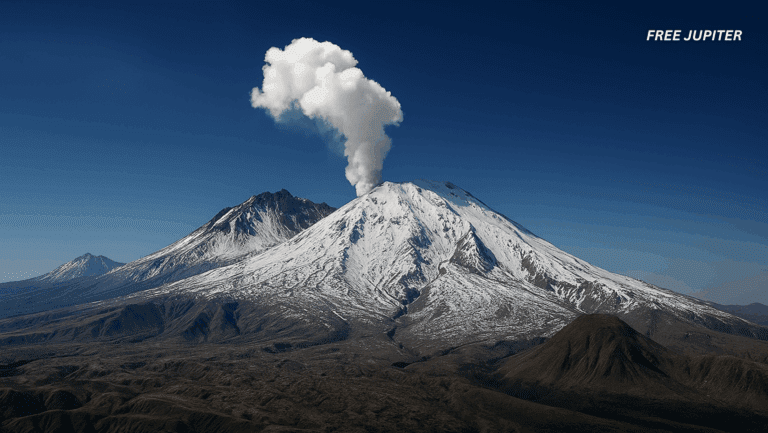Friendly Note: FreeJupiter.com shares general info for curious minds 🌟 Please fact-check all claims—and always check health matters with a professional 💙
Astronomers are no strangers to surprises from the cosmos, but every once in a while, the universe delivers something so unusual it forces scientists to rethink their long-held ideas. That’s exactly what happened with the discovery of a new kind of stellar explosion that has been described as “like nothing anyone has ever seen before.”
The event, officially named SN2021yfj, is a brand-new type of supernova — one that stripped itself nearly bare before detonating in spectacular fashion. The finding, published in the journal Nature, has opened a fresh chapter in our understanding of how massive stars live, die, and recycle their matter back into the cosmos.
See it here:
Stars as Cosmic Onions
To picture why this discovery is unusual, think of a massive star as a giant onion in space. Just as an onion has layers within layers, a star develops shells of different elements as it ages.
- The outermost layers are usually made of hydrogen and helium, the lightest gases in the universe.
- Beneath them lie carbon and oxygen.
- Deeper still, heavier elements form — neon, magnesium, sulfur, silicon.
- And finally, at the very core, iron builds up.
This structure comes from a process called nuclear fusion, the same process that powers our sun. Fusion works like a cosmic forge: lighter elements smash together under immense pressure and heat, creating heavier ones and releasing huge amounts of energy in the process. That energy pushes outward and keeps the star from collapsing under its own gravity.
But when the core fills with iron, the balance tips. Iron doesn’t release useful energy when fused, and without that protective outward push, gravity wins. The star’s core collapses in on itself, triggering a supernova — one of the most powerful explosions in the universe.
At least, that’s the typical story.
Read more: Simulation Showing The Speed of Voyager 1 at Ground Level Is Almost Unbelievable
When the Star Breaks the Rules
The supernova SN2021yfj, first spotted in 2021, didn’t fit the usual mold. Long before its death, the star had already shed its hydrogen and helium layers. By itself, that wasn’t unheard of — stars can sometimes “peel” themselves over time, throwing off their outer gases into space.
But then came the bizarre twist. Right before its final collapse, the star expelled an inner layer of silicon, sulfur, and argon — elements normally locked deep inside.
When the explosion finally came, the blast wave crashed into this exposed layer, heating it until it glowed brightly. This made the hidden shell visible for the first time in astronomy’s history.
As Steve Schulze, one of the researchers, put it: “This is the first time we have seen a star stripped to the bone.”
A Window Into a Star’s Core
For decades, scientists have theorized about what the deep interiors of massive stars look like, but those inner layers are usually impossible to see. Supernovas, when they happen, tend to blast everything together in a messy mix. The clean glimpse of silicon and sulfur provided by SN2021yfj was like peering into a star’s anatomy just before death.
Adam Miller, an astrophysicist at Northwestern University, admitted that the discovery was so odd that at first the team thought they might have observed the wrong object. But the evidence was clear: stars may end their lives in ways far stranger than anyone expected.
This isn’t just a curiosity — it has big implications. If stars can shed so much of themselves before dying, our models of stellar evolution may need serious updates.
Cosmic Recycling: Why Supernovas Matter
The drama of exploding stars isn’t just for show. Supernovas are cosmic recyclers.
Every heavy element that makes life possible — from the iron in your blood to the calcium in your bones, even the gold in jewelry — was forged in a star and blasted into space by one of these explosions. Without supernovas, planets, oceans, and people wouldn’t exist.
This is why astronomers pay such close attention to them: by understanding supernovas, we are also tracing the origin of matter itself.
The peculiar case of SN2021yfj adds a new layer to that story, showing that stars may scatter their riches in stranger and more complicated ways than we realized.
How Astronomers Caught the Explosion
SN2021yfj was first detected by the Zwicky Transient Facility in California, a project that scans the night sky for cosmic events that flare up and vanish. In September 2021, the system spotted a sudden brightening about 2.2 billion light-years away.
To learn more, astronomers needed a spectrum — essentially a breakdown of light into colors, which reveals the “fingerprints” of elements present. Luckily, Yi Yang, an astronomer at Tsinghua University, captured a spectrum using the Keck Observatory in Hawaii.
That data showed something unmistakable: the glowing signatures of silicon, sulfur, and argon. Without this crucial step, the supernova might have been misclassified as ordinary.
Avishay Gal-Yam, a supernova expert from Israel’s Weizmann Institute of Science, confirmed the discovery. For the first time, astronomers were staring directly at a star’s inner chemical layers before they were blown apart.
A Brand-New Category of Explosion
Because this explosion didn’t match any existing types, the team gave it a new classification: Type Ien supernova (pronounced “one-ee-en”).
Here’s how it fits into the broader family:
- Type II: show hydrogen in their spectra.
- Type Ib: show helium but not hydrogen.
- Type Ic: show oxygen but no hydrogen or helium.
Now comes Type Ien: the first to expose deep layers of silicon, sulfur, and argon.
It’s like adding a new page to the cosmic field guide for stellar deaths.
Could Companion Stars Be to Blame?
One mystery remains: why did this star lose so much of itself before exploding?
Scientists are exploring several possibilities:
- Stellar winds: powerful flows of gas that can strip layers away over time.
- Violent instabilities: internal tremors that cause stars to contract, then erupt explosively.
- A companion star: if the star had a close partner, the second star could have pulled material away.
The leading idea is that the star essentially tore itself apart from within. Whatever the cause, something incredibly violent must have occurred in the months leading up to the final blast.
Why This Discovery Matters for the Big Picture
Astronomy isn’t just about cataloging strange phenomena; it’s about fitting those pieces into the puzzle of the universe. Discoveries like SN2021yfj help scientists refine models of how stars evolve, how galaxies enrich themselves with elements, and even how conditions for life arise.
It also highlights something humbling: for all our progress, nature continues to surprise us. Stars, which might seem predictable on paper, can find astonishingly exotic ways to end their lives.
As Adam Miller summed it up: “It’s not that our textbooks are wrong. They’re just incomplete.”
Read more: Harvard Scientist Suggests Interstellar Object Might Be a Nuclear-Powered Spacecraft
The Universe Still Has Secrets
Supernovas are among the most spectacular events in the universe, yet SN2021yfj shows that even the most studied cosmic phenomena can still hold surprises.
The star that created this explosion lived fast and died violently, leaving behind a glowing signature of its innermost secrets. For astronomers, it was like catching lightning in a bottle — a fleeting glimpse of something that challenges the rules.
And for the rest of us, it’s a reminder that the universe is still full of mysteries waiting to be uncovered.










